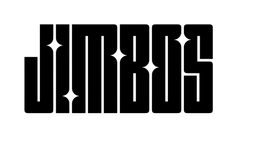Do You Really Need to Clay Before Polishing?
Some say always clay before you polish. Others say it’s a waste of time. So who’s right? Here’s what actually matters.
Claying your paint removes embedded contaminants—things your regular wash can’t touch. These include brake dust, rail dust, sap, and bonded grime. If you polish over that contamination, it can interfere with your results or even cause more micro-marring.
But claying isn’t always mandatory. Let’s break down when to do it, how to do it safely, and when it’s okay to skip.
When You Should Clay Before Polishing
- Your paint feels rough after washing (try the plastic bag test)
- The car has visible contamination or overspray
- You’re working on a vehicle that hasn’t been detailed in over a year
- You’re using a polish that requires a clean, bonded-free surface
When You Can Skip It
- The vehicle is brand new or recently clayed
- You’re doing a super light enhancement polish on well-maintained paint
- Time is limited and the surface feels smooth to the touch
Clay Bar vs Clay Mitt – What’s Better?
Traditional clay bars work well but take longer and can be dropped (which ruins them). Clay mitts are faster, reusable, and easier to handle. If you’re polishing afterward, a mitt like this is usually the best choice.
Pro tip: Don’t use the Scrub Buddy Pad for this. It’s for interiors—never use it on paint.
How to Clay the Right Way
- Wash the car thoroughly with The Super Soaper
- Spray a clay lubricant or use the soap as lube on a wet surface
- Glide the mitt or bar gently back and forth with no pressure
- Rinse or wipe off residue after each panel
- Dry with the Massive Drying Towel
Why It Matters for Polishing
If your paint is contaminated, your pad will clog faster, the polish won’t work evenly, and you may leave behind new swirls or haze. A clean surface ensures your polish, like Picture Perfect Polish, performs at its best—especially on soft or black paint.
Recommended Products
- The Super Soaper – Pre-Wash & Lubricant
- Massive Drying Towel
- Picture Perfect Polish – One Step Correction
Related Posts
- The Biggest Polishing Mistakes Most People Make
- One-Step Polish vs Compound & Polish – What’s Better?
- Pad Selection 101 – Cut, Finish, and Everything In Between




